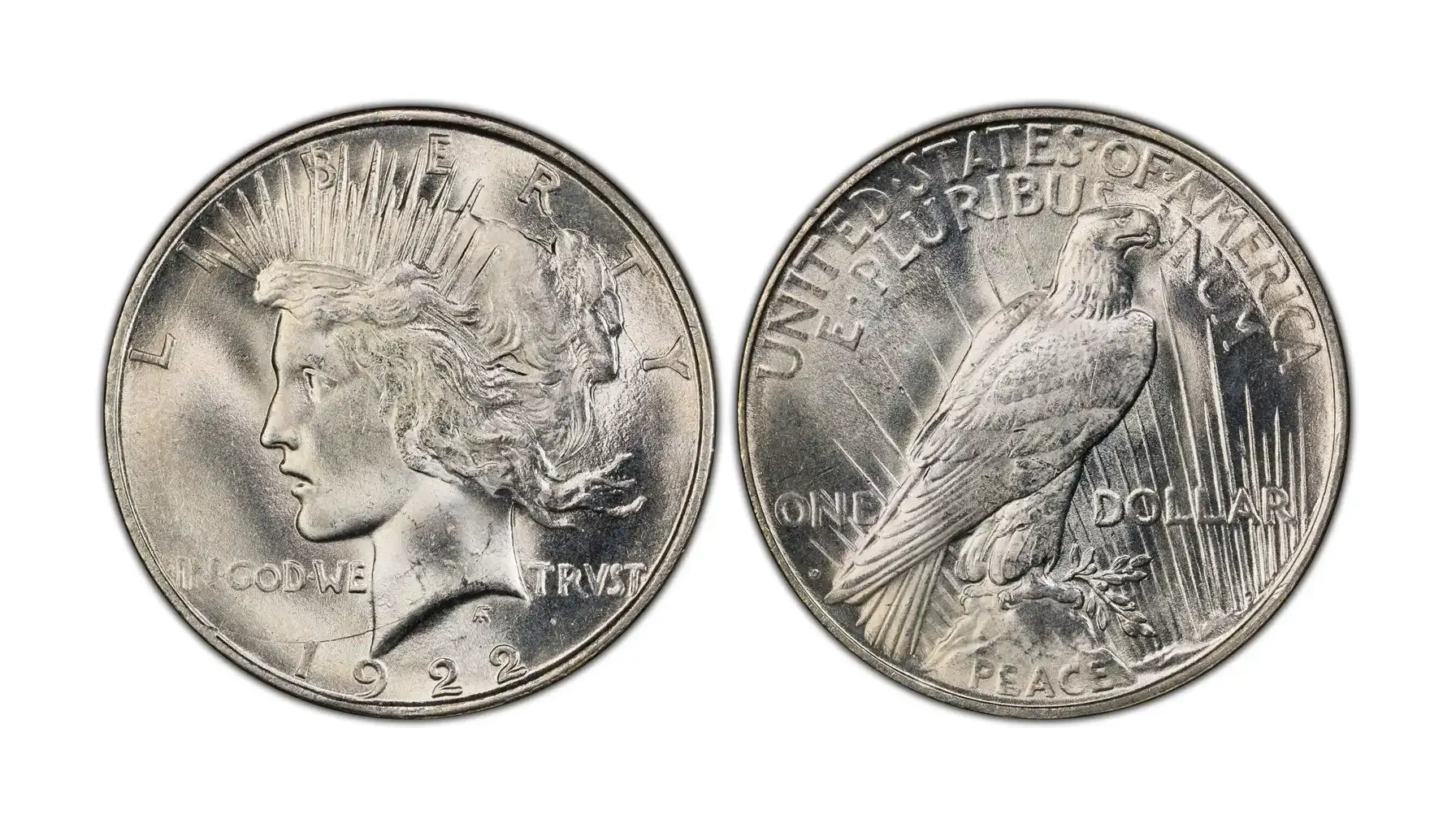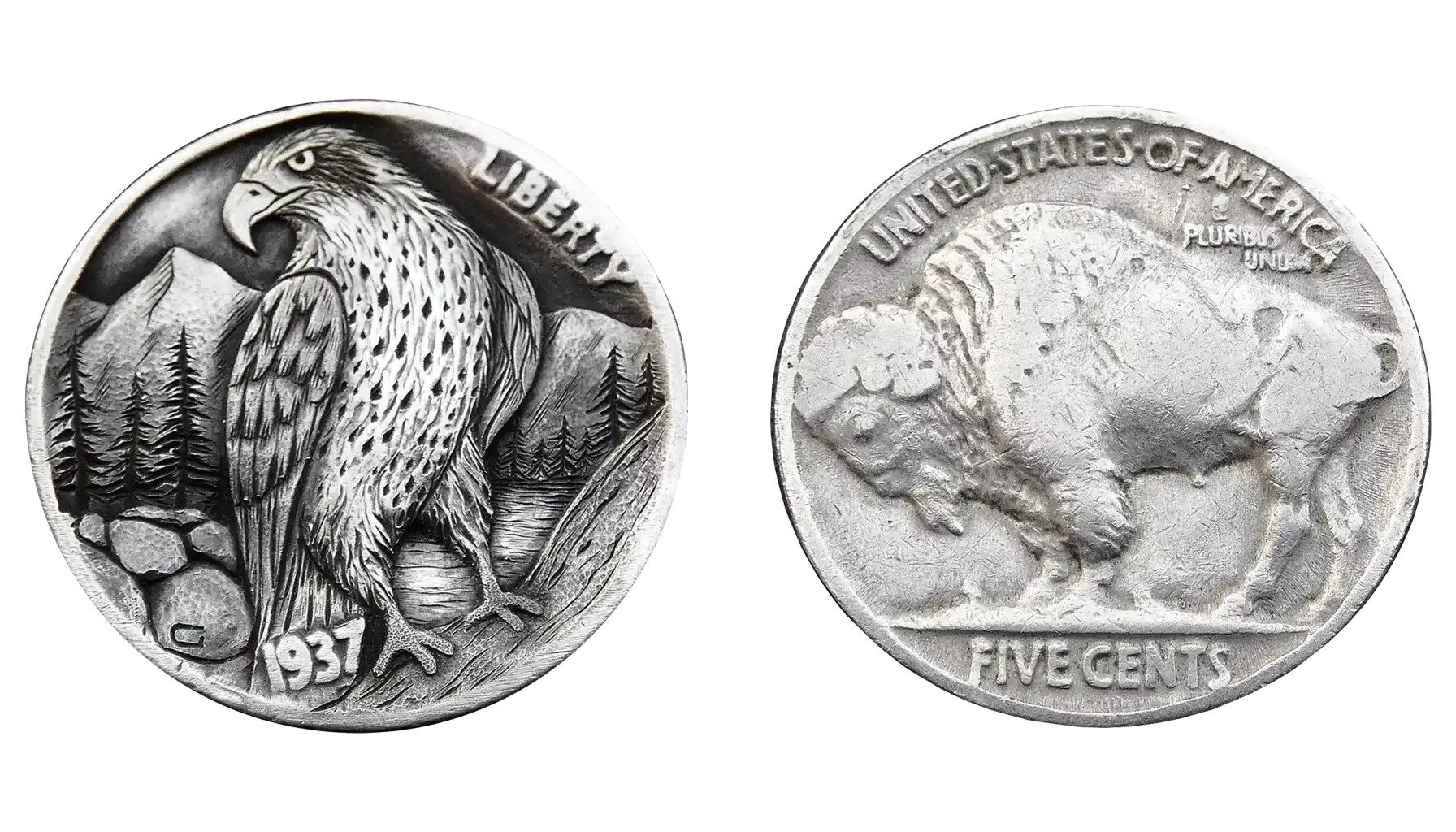Contents:
The 1999 Statehood Quarters became the beginning of the most celebrated coinage program in American history. These quarters honored the first five states to ratify the Constitution. Many collectors from different parts of our world want to have one. The Georgia 1788 quarter 1999 value, the Delaware 1787 quarter 1999 value, and others from this series remain highly sought-after by numismatists.
We would like to give you more details about each coin, their numismatic significance, and their current market values.
By the way, you can try to check it out in practice by yourselves with the best coin identifier app! Read the article, and you will understand why.
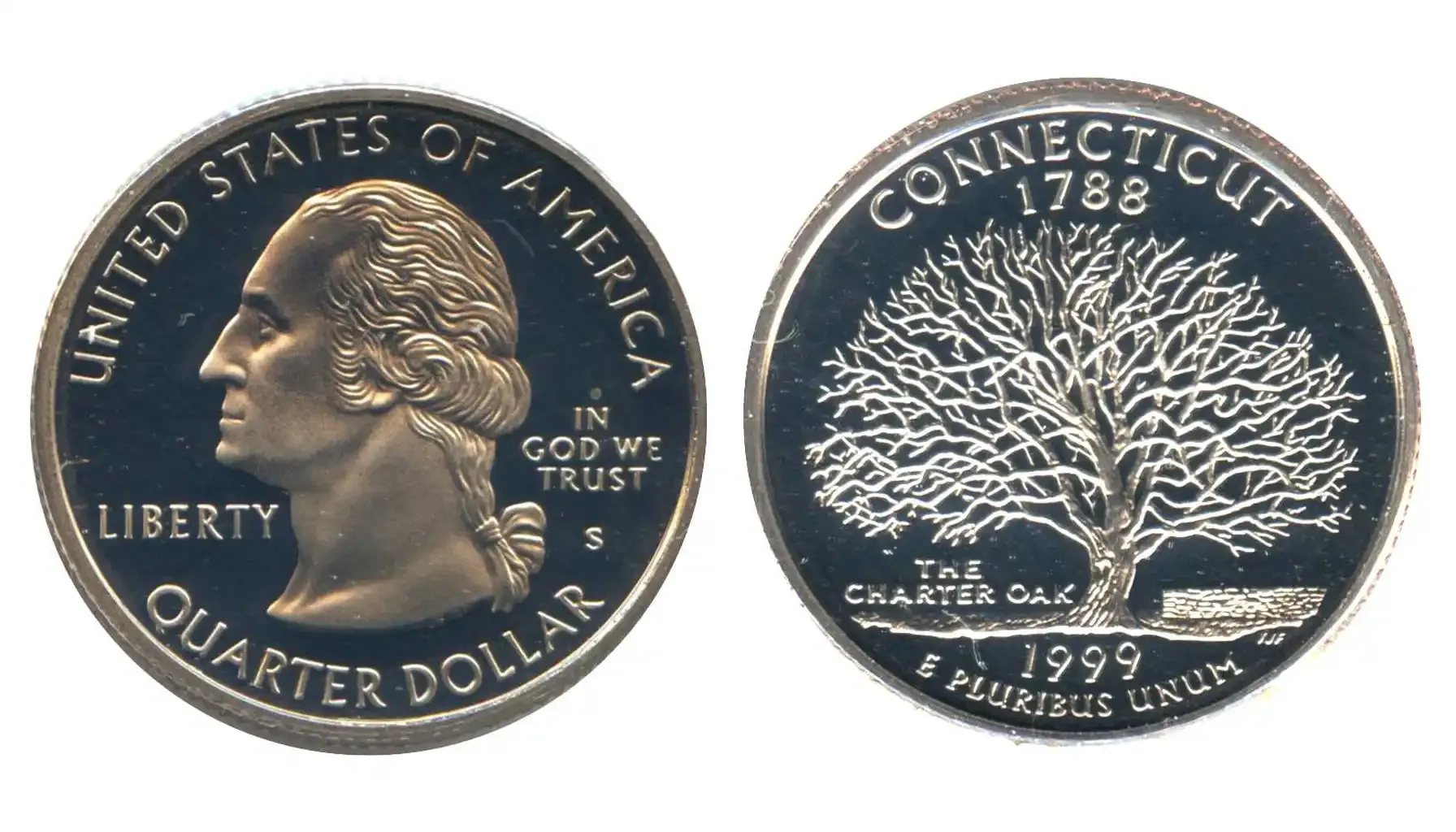
A Brief History of the 1999 Statehood Quarters
In 1999, the U.S. Mint launched the 50 State Quarters program to honor each state. The first five pieces featured Georgia, Delaware, Pennsylvania, New Jersey, and Connecticut. Each design depicted a historical symbol of its respective state.
Release order:
Delaware (January 4, 1999): Depicts Caesar Rodney’s historic horseback ride.
Pennsylvania (March 8, 1999): Features the Commonwealth statue and Keystone symbol.
New Jersey (May 17, 1999): Highlights George Washington crossing the Delaware River.
Georgia (July 19, 1999): Shows the state peach and Live Oak sprigs.
Connecticut (October 12, 1999): Displays the Charter Oak.
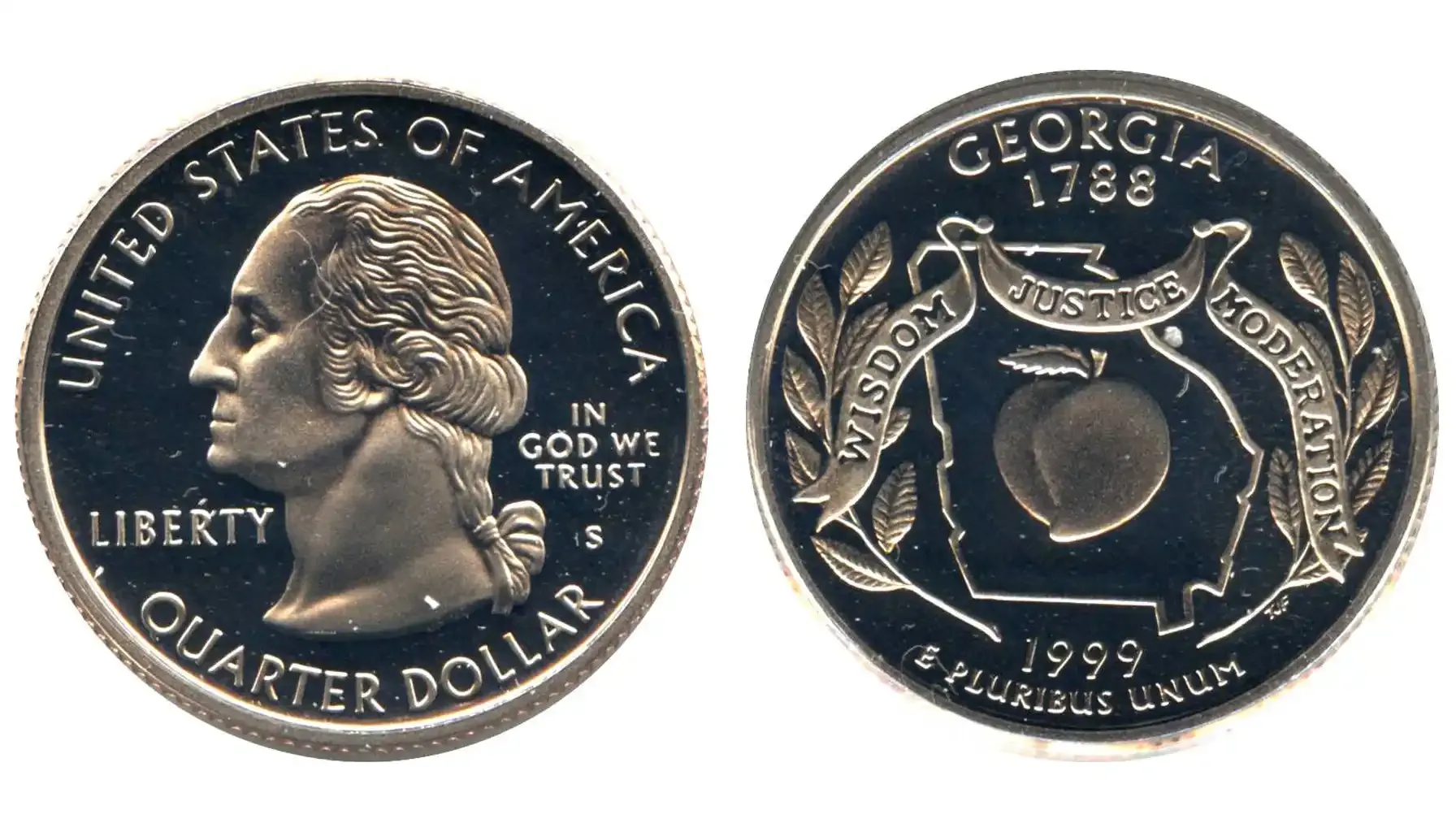
Design and Features
Obverse:
All coins bear John Flanagan’s modified portrait of George Washington. The standard inscriptions include:
UNITED STATES OF AMERICA
LIBERTY
IN GOD WE TRUST
The mint mark (P, D, or S)
Reverse:
Each reverse celebrates its state with different details and symbols:
Delaware: Caesar Rodney’s ride.
Pennsylvania: Commonwealth statue.
New Jersey: Washington’s crossing.
Georgia: Peach and oak.
Connecticut: Charter Oak.
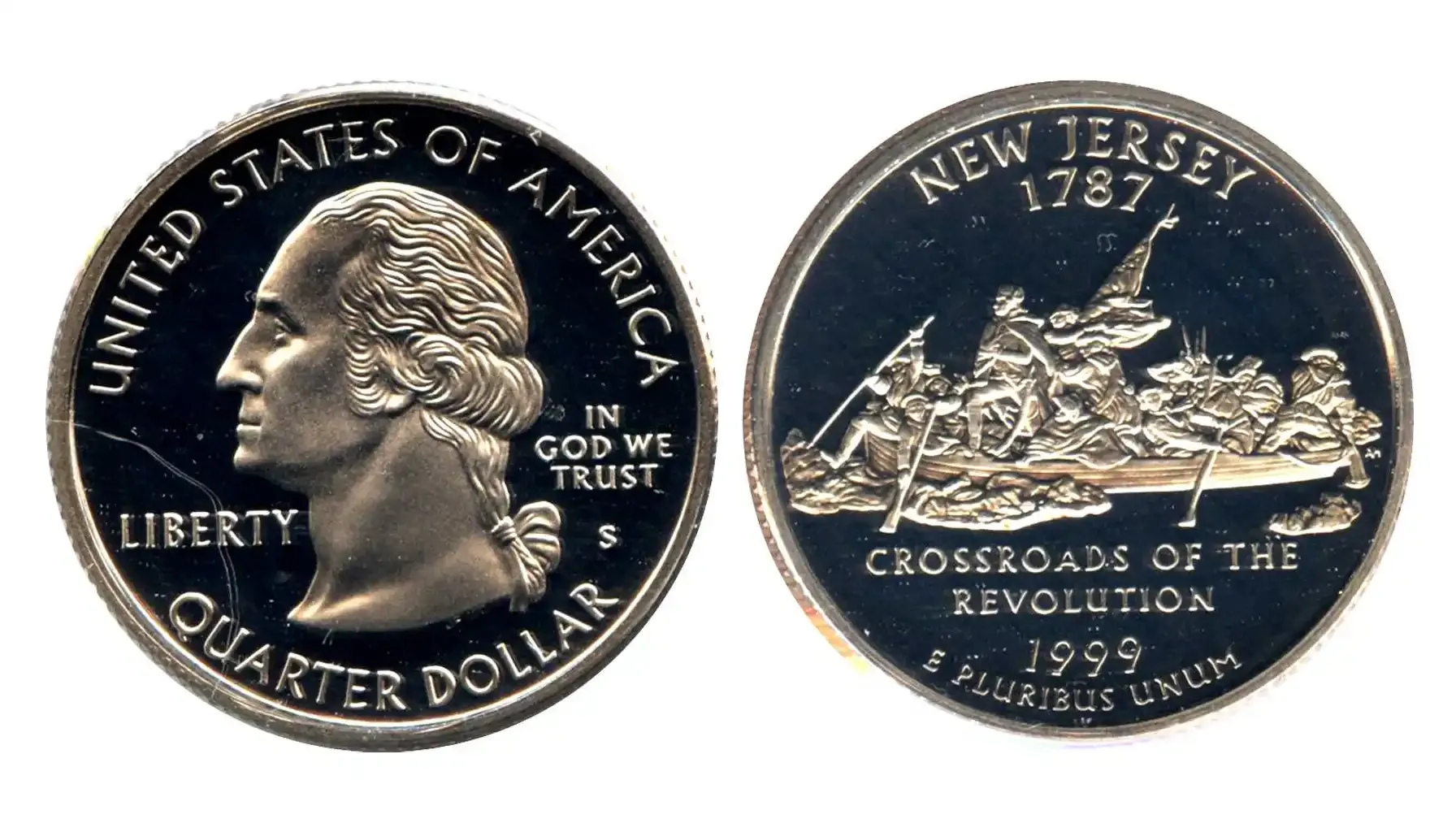
Type | Mintage (Regular Strike) | Proof Mintage | Composition | Diameter | Weight |
1999 P Delaware | 373,400,000 | N/A | Cupronickel | 24.26 mm | 5.67 g |
1999 D Delaware | 401,424,000 | N/A | Cupronickel | 24.26 mm | 5.67 g |
1999 P Pennsylvania | 349,000,000 | N/A | Cupronickel | 24.26 mm | 5.67 g |
1999 D Pennsylvania | 358,332,000 | N/A | Cupronickel | 24.26 mm | 5.67 g |
1999 P Georgia | 451,188,000 | N/A | Cupronickel | 24.26 mm | 5.67 g |
1999 D Georgia | 488,744,000 | N/A | Cupronickel | 24.26 mm | 5.67 g |
1999 P Connecticut | 688,744,000 | N/A | Cupronickel | 24.26 mm | 5.67 g |
1999 D Connecticut | 657,880,000 | N/A | Cupronickel | 24.26 mm | 5.67 g |
Values of the 1999 Quarters
The value of these quarters varies significantly based on condition, grading, and rarity. Below is a more detailed breakdown:
1999 P and D Delaware Quarters
1999 P Delaware quarter value: In MS60, these are worth $3; in MS65, they rise to $5. Exceptional MS68 specimens can fetch over $1,250, with an auction record of $4,888 for MS66 examples.
1999 D Delaware quarter value: Similarly priced, MS60 Delaware 1999 quarter value is worth $3, while MS65 pieces are valued at $6. Rare MS67 coins can sell for $75, and the auction record for MS64 is $1,380.
1999 Delaware silver proof (S): Valued at $13 in PR69 quality and can reach $675 for PR70 DCAM grades. The value of 1999 Delaware quarter of this type once PR70 held the record at $17,250.
Related article: 1965 Dime Value Guide.
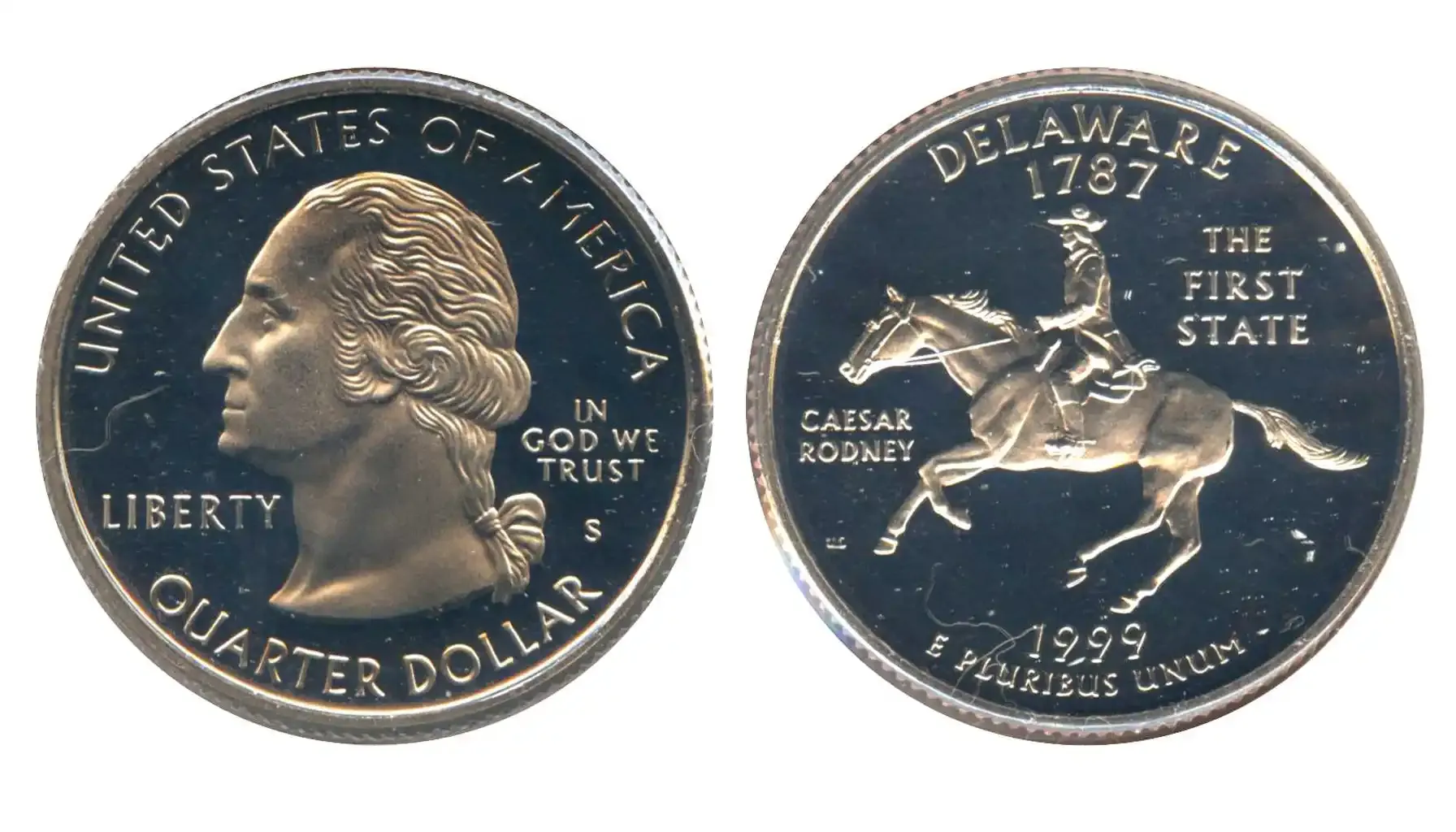
1999 P and D Pennsylvania Quarters
1999 P Pennsylvania quarter value: MS60 examples start at $3 and go up to $5 in MS65. The most notable MS67 1999 P quarter value achieved an auction price of $10,200.
1999 D Pennsylvania quarter value: MS60 coins are worth $3, MS65 at $5, and MS68 specimens command $8,750. The highest auction record is $8,750 for an MS68 piece.
1999 Pennsylvania silver proof (S): PR65 coins are valued at $7, with PR70 DCAM silver ones reaching up to $1,725.
1999 P and D Georgia Quarters
1999 Georgia quarter value for standard MS60 examples is valued at $3, while MS65 coins rise to $5. High-grade MS68 ones are priced at $5,500, with an MS65 piece auctioned for $4,200.
1999 D Georgia quarter value: Valued similarly in lower grades, MS60 Georgia 1999 quarter value is $3, and MS65 coins are $5. MS67 coins can reach $125, with an MS68 auction record of $329.
1999 Georgia silver proof (S): The value of 1999 Georgia quarter in PR65 is about $7, and PR70 specimens have been auctioned for over $1,150.
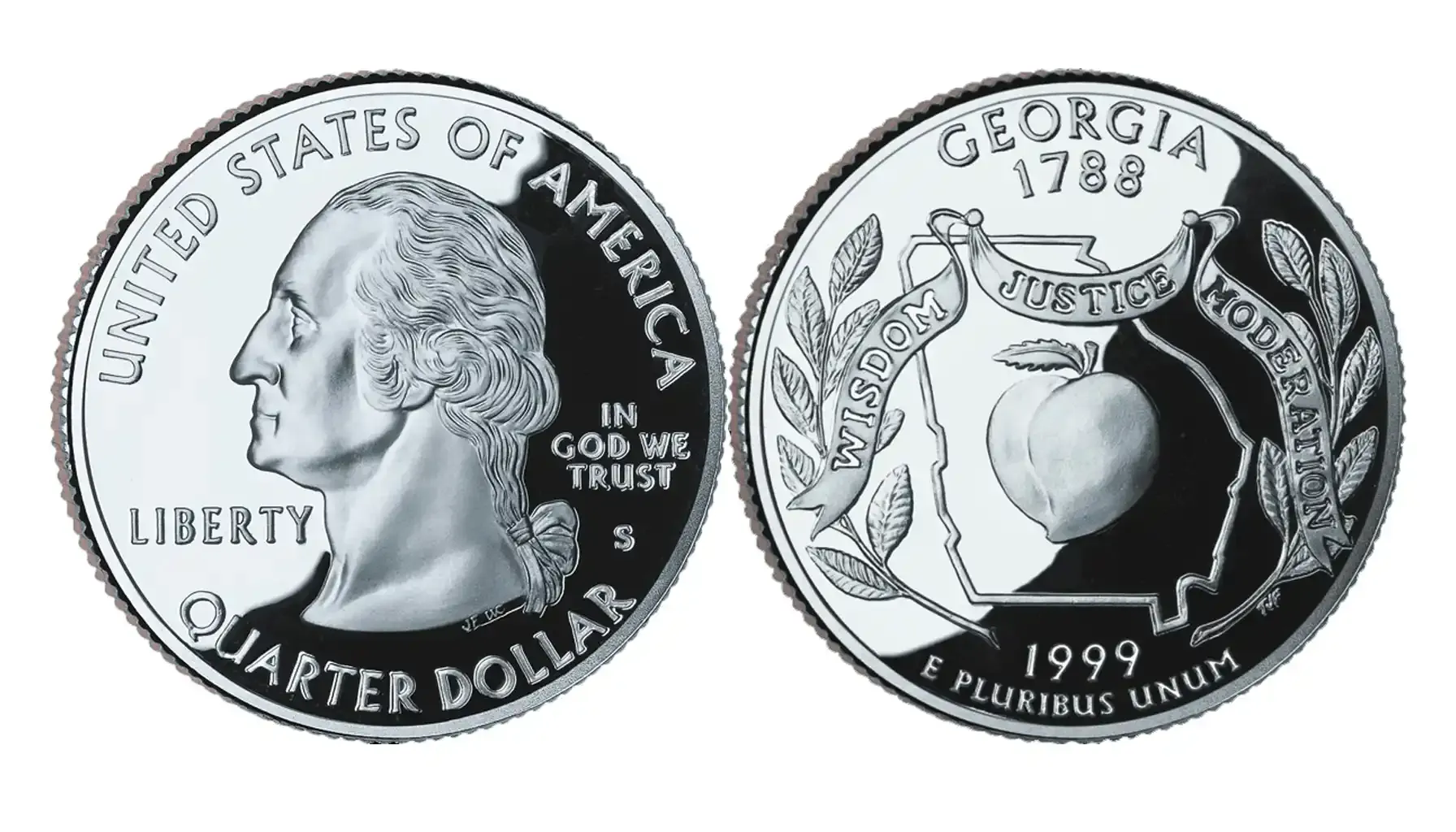
1999 P and D Connecticut Quarters
1999 P Connecticut quarter value: MS60 specimens are priced at $3, with MS65 examples at $5. High-grade coins (MS68) have reached $4,362 at auction.
1999 D Connecticut quarter value: Lower-grade 1999 Connecticut quarter value may be $3 (MS60) and $5 (MS65), while MS68 examples can fetch $1,000, with an auction record of $2,300.
1999 Connecticut silver proof (S): PR65 ones are worth $12, while PR70 silver coins have fetched $1,610 in top auctions.
Type | MS60 | MS65 | MS67 | MS68 | Auction Record |
1999 Delaware P Quarter Value | $3 | $5 | N/A | $1,250+ | $4,888 (MS66) |
1999 D Delaware | $3 | $6 | $75 | N/A | $1,380 (MS64) |
1999 S Delaware Silver Proof | N/A | N/A | $675 | N/A | $17,250 (PR70 DCAM) |
1999 P Pennsylvania | $3 | $5 | $10,200 | N/A | $10,200 (MS67) |
1999 D Pennsylvania | $3 | $5 | $120 | $8,750 | $8,750 (MS68) |
1999 S Pennsylvania Silver Proof | N/A | N/A | $1,725 | N/A | $1,725 (PR70 DCAM) |
1999 P Georgia | $3 | $5 | N/A | $5,500 | $4,200 (MS65) |
1999 D Georgia | $3 | $5 | $125 | $329 | $329 (MS68) |
1999 S Georgia Silver Proof | N/A | N/A | $1,150 | N/A | $1,150 (PR70 DCAM) |
1999 P Connecticut | $3 | $5 | N/A | $4,362 | $4,362 (MS68) |
1999 D Connecticut | $3 | $5 | $1,000 | $2,300 | $2,300 (MS68) |
1999 S Connecticut Silver Proof | N/A | N/A | $1,610 | N/A | $1,610 (PR70 DCAM) |
Key Error Coins
Error coins are highly sought after in the world of numismatics due to their unique characteristics and rarity. These are the result of mistakes made during the minting process, which can include planchet errors, striking errors, or die errors. Collectors love them for their rarity and for the complexities of the production.
Planchet Errors: These occur when the blank metal disc used for minting is flawed. Examples include clipped planchets (where part of the disc is missing) or coins struck on the wrong metal planchet.
Striking Errors: These happen during the minting process when the coin is struck improperly. Examples include off-center strikes, when the design is misaligned, leaving part of the coin blank; double strikes, when the coin is struck more than once, resulting in overlapping designs; brockage errors, when a coin is struck with another one stuck in the die, creating a mirrored image.
Die Errors: These are caused by issues with the stamping dies used to create the design. Examples include die cracks with visible cracks in the coin's design caused by a damaged die; rotated dies, when the alignment of the obverse and reverse sides is incorrect; die adjustment strikes, when coins struck with insufficient pressure, resulting in incomplete designs.
Layering Errors: Coins missing a clad layer, exposing the underlying metal.
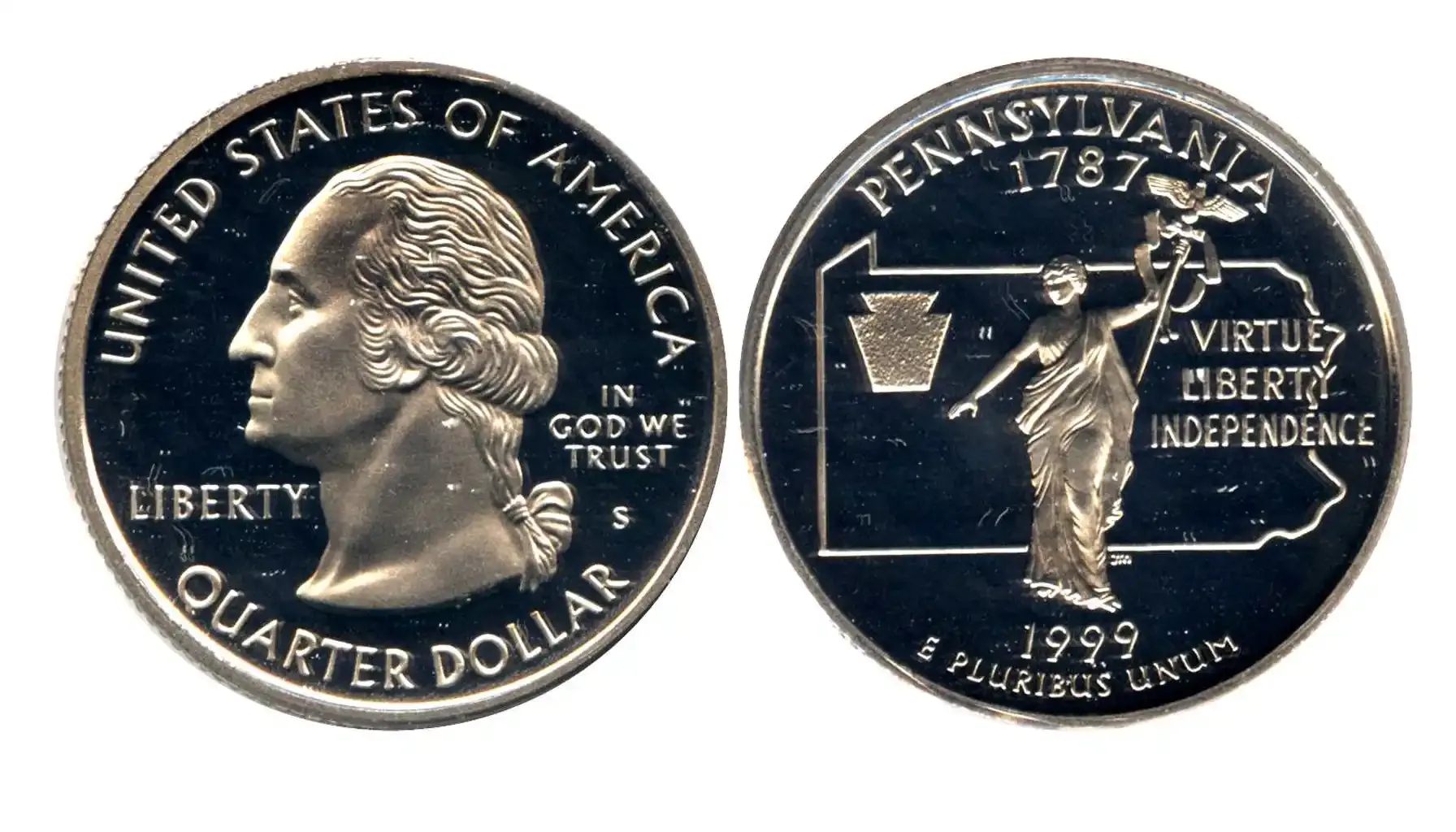
1999 Statehood Quarter Errors to Look For:
The 1999 Statehood Quarters are no exception when it comes to error ones. Some notable examples include:
1999 P Delaware quarter struck on an experimental planchet: Valued at $4,800 to $9,800.
1999 quarters with obverse brockage errors: Worth over $3,000.
1999 D Georgia quarter with a rotated reverse error: Valued at $200.
1999 P quarters with multiple strikes: Highly valuable due to their uniqueness.
Off-center struck quarters: Depending on the degree of the error, these coins can fetch $100 to $1,000.
Missing clad layer errors: Typically valued between $400 and $800, depending on the coin's condition and rarity.
By the way! Here is a list of the most valuable rare dime coins.
Where to Buy and Sell
You can buy and sell 1999 quarters through various channels depending on their type and value. Local coin shops are a great place to start, as they often deal with collectible coins and can evaluate special quarters, e.g., those with errors or high grades.
Online marketplaces like eBay and Etsy also offer platforms to find and sell 1999 quarters, including State Quarters, though pricing can vary. Social platforms like Facebook Marketplace can connect you with local buyers or sellers, but caution is necessary to avoid scams.
Numismatic auctions, such as those on Heritage Auctions or Stack’s Bowers Galleries, are excellent for rare or valuable quarters, especially if they have errors or exceptional grading. Coin shows provide opportunities to trade directly with other collectors and dealers, while coin clubs or online forums like Coin Talk allow you to connect with numismatists and access additional resources for buying and selling.
Specialized websites such as Apmex, JM Bullion, or Littleton Coin Company sometimes list collectible 1999 quarters, particularly those certified by grading services like PCGS or NGC. For standard quarters, you might try your local bank, which may still have uncirculated rolls of the 1999 State Quarters series.
If selling, it is advisable to get your coins professionally graded if they are in excellent condition or have unique features like minting errors. Researching recent sale prices and presenting clear, high-quality photos with accurate descriptions can help attract buyers and secure a fair price. Regular circulating quarters without special features generally hold their face value unless they are uncirculated or part of a unique set.
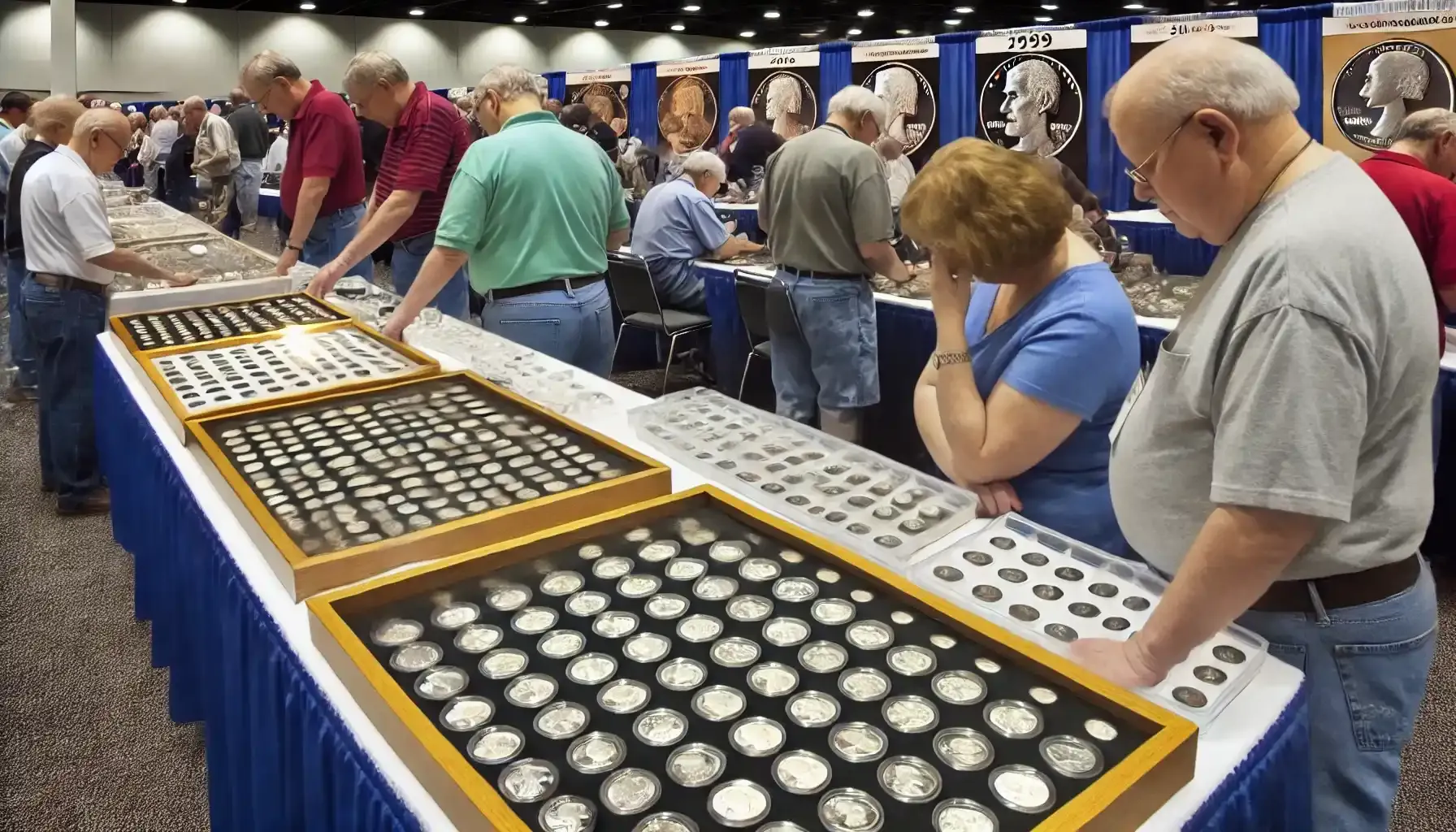
Your Perfect Collection
The 1999 Statehood Quarters remain popular in modern numismatics. As you can see, values can differ and start from face value to thousands of dollars.
For identifying and valuing your quarters, consider using the Coin ID Scanner app. This user-friendly app helps determine which coin you have and assess it. This tool is convenient and easy for collectors at all levels. The only thing you need to do is to upload a picture of your coin (you can take it right in the app), and it will tell you everything you need about the piece you have.

